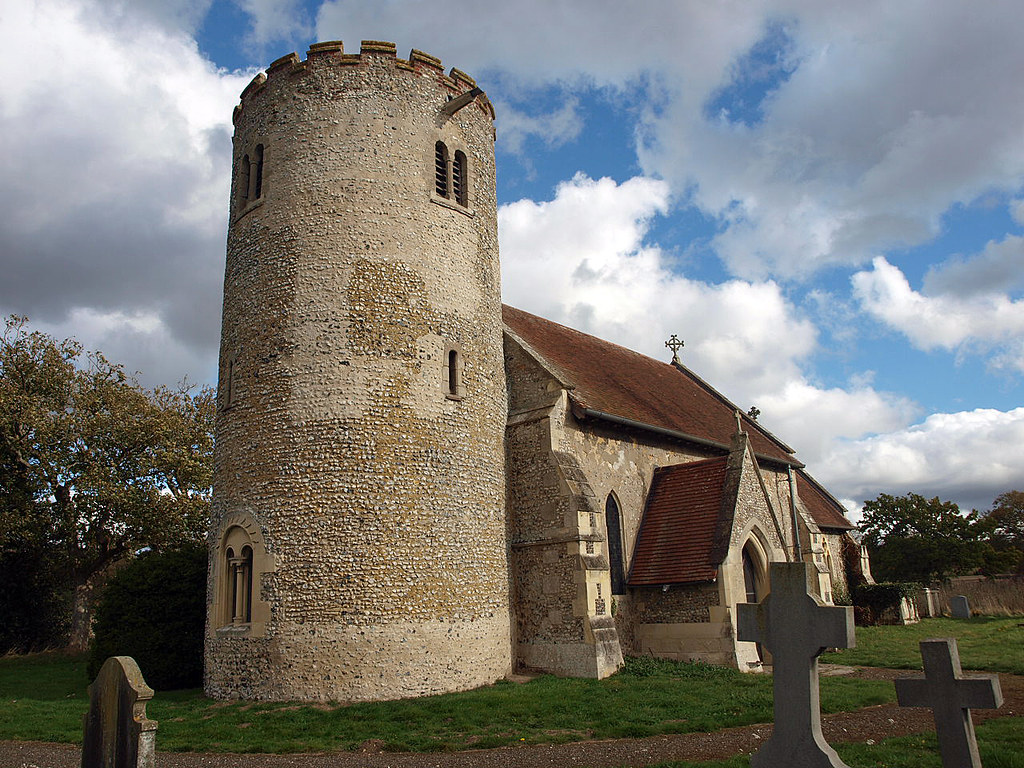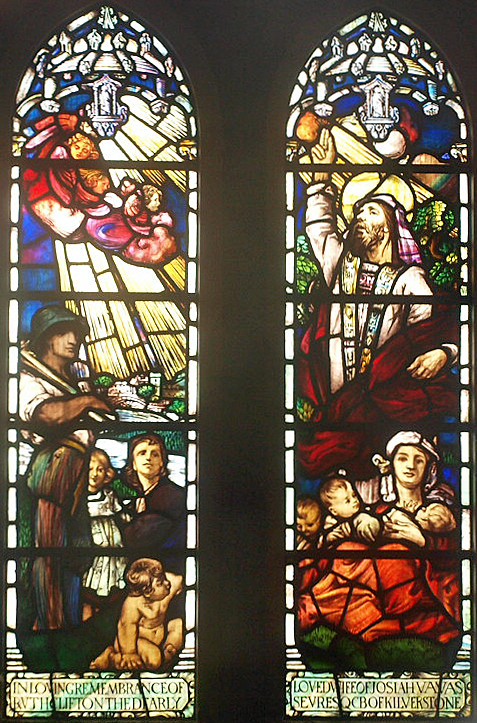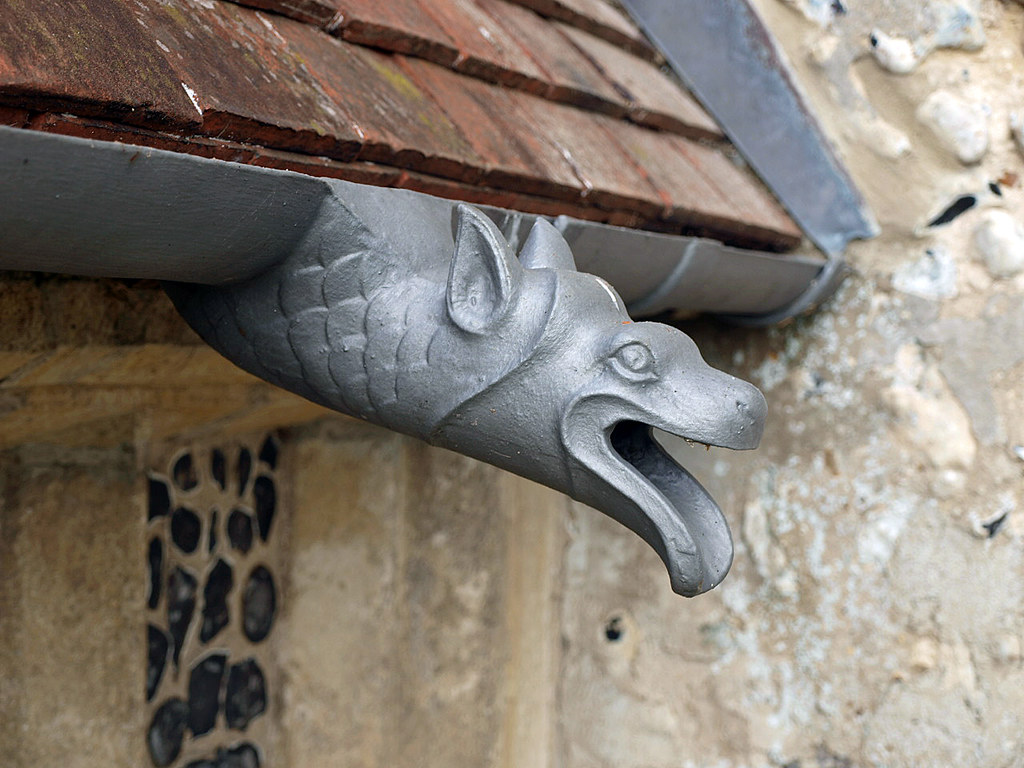ST ANDREW. Sturdy round tower with Norman windows. Late Norman S doorway. One order of shafts with volute capitals. The arch has a zigzag moulding at r. angles to the wall surface. The church is small and aisleless, but must once have had a N aisle. - ROYAL ARMS. 1716; handsome. - STAINED GLASS. An attractive window of 1908 in the Selwyn Image style (nave S).
KILVERSTONE. It is only small, but is all delightful in its seclusion, reached by a lane of stately trees. A group of four gabled dwellings under one roof stands by the green, on which is a fine maple by a fountain and a shelter. It is the village peace memorial, and on it are the words:
There is some corner of a foreign field
that is for ever England.
The grief that lingers and the pride that burns,
All that love means and honour can express.
that is for ever England.
The grief that lingers and the pride that burns,
All that love means and honour can express.
From this green a grassy track leads down to the small church where Admiral Lord Fisher was buried with his wife. It looks across to the gabled house, and has a charming outlook over the meadows. Lord Fisher died in 1920, known to all the world, and his story is written in the annals of the British Navy. He served as a cadet in the Baltic Fleet during the Crimean War; he lived to nominate Admiral Jellicoe to command the British Fleet in the Great War. From the war which was a great blunder to the war which was a universal catastrophe he served his country well. To his vision and grasp of essentials he joined a burning patriotism and an undying belief in the destiny of our race; but he was a difficult man and resigned in a crisis during the war. He rests at Kilverstone, where he has a memorial carved with three of his orders and his arms.
A beautiful lychgate with dormer windows in its shingled roof has a cornice of vines under its eaves and squirrels eating acorns in the spandrels of its arches. That is 20th century, but the trim little church to which the lychgate leads us has a story and something to show of about a thousand years ago. Its round tower was perhaps built by the Saxons, though its battlements are 15th century. A fine little Norman doorway, 3 feet wide and 7 high, its arch of roll and zigzag mouldings resting on pillars with carved capitals, leads us inside, where restoration has given a new look to the 14th-century nave and the 15th-century chancel. But there is beauty in the modern work.
Lovely glass glows richly in a window, showing a priest, a labourer, and two mothers with children. The reredos of stone and marble has a mosaic head of the Good Shepherd with a sheep on his shoulder. The oak pulpit has carving and a panel showing Christ ascending with cherubs round Him and two disciples at His feet. At the foot of the pulpit stair rail, on the ends of the choir seats, and on a chair in the sanctuary, kneel musical and praying angels.



No comments:
Post a Comment